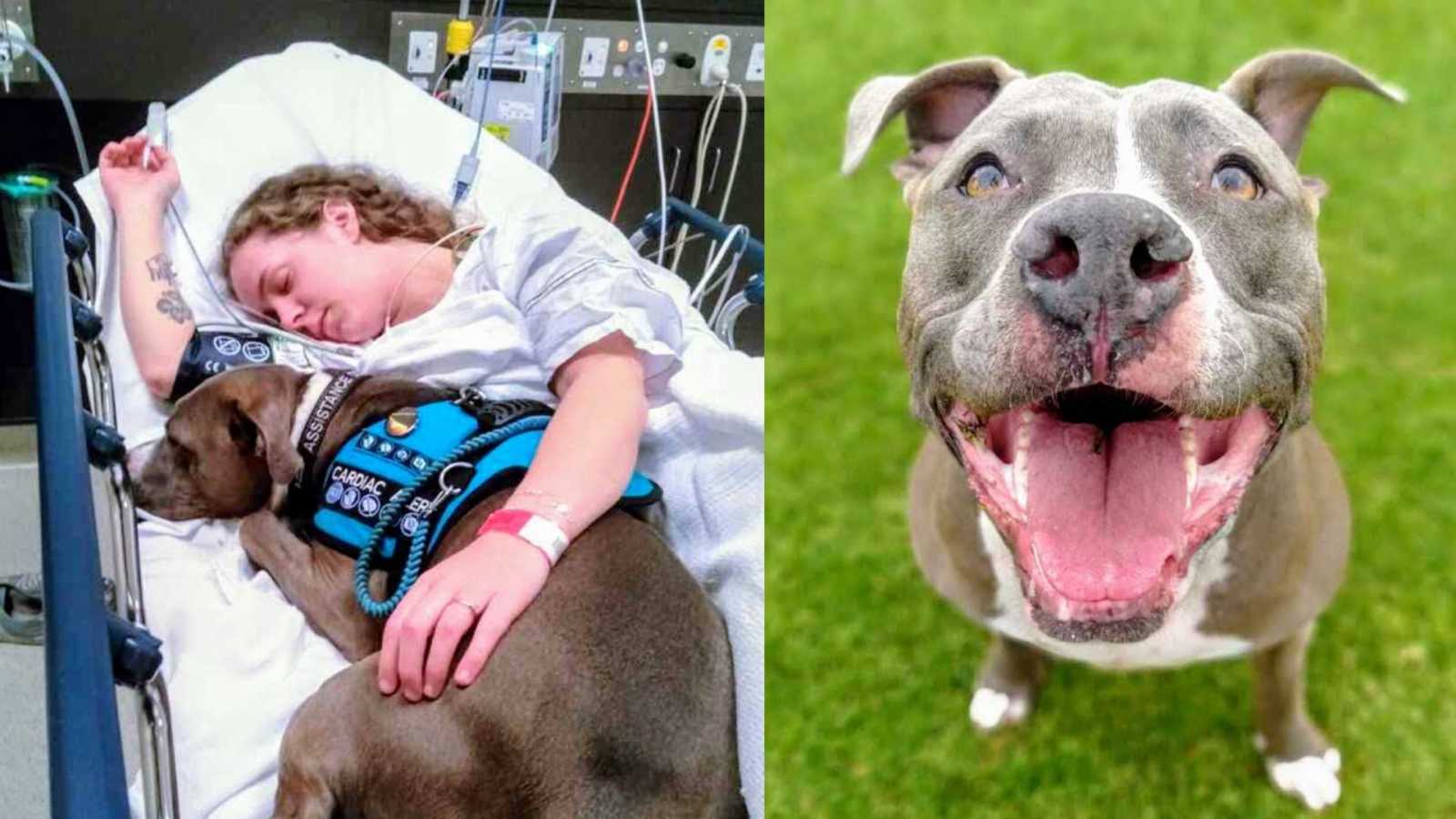“The day I laid eyes on Ruby, I had no idea what impact this tiny, 6-week-old rescue puppy was going to have on my life. I was just an average teenager, living out of home and trying to complete my final year of high school. There was one thing standing in my way… debilitating panic disorder and clinical depression caused by years of bullying throughout high school.
I had always wanted a dog, but my house as a child was never suitable for one. I was a huge animal lover and had just about every other animal you could think of — fish, guinea pigs, ferrets, even turtles — but never a dog. I had moved out just before I turned eighteen and was living with my now fiancé. We had talked about getting a dog and had read about how having one could help relieve the effects of anxiety and depression. So the search for a puppy began!
A friend of mine saw I was searching for a Staffy breed and let me know her neighbor had a litter ready to go. We went to have a look and soon realized that they weren’t a breeder at all, it was a puppy farm. Ruby was brought out to me, this tiny, fragile-looking puppy, covered in filth and in desperate need of a wash and lots of love. As soon as she was put in my arms, that was it, I wasn’t giving her back. I would take her home to give her the love and care she needed.
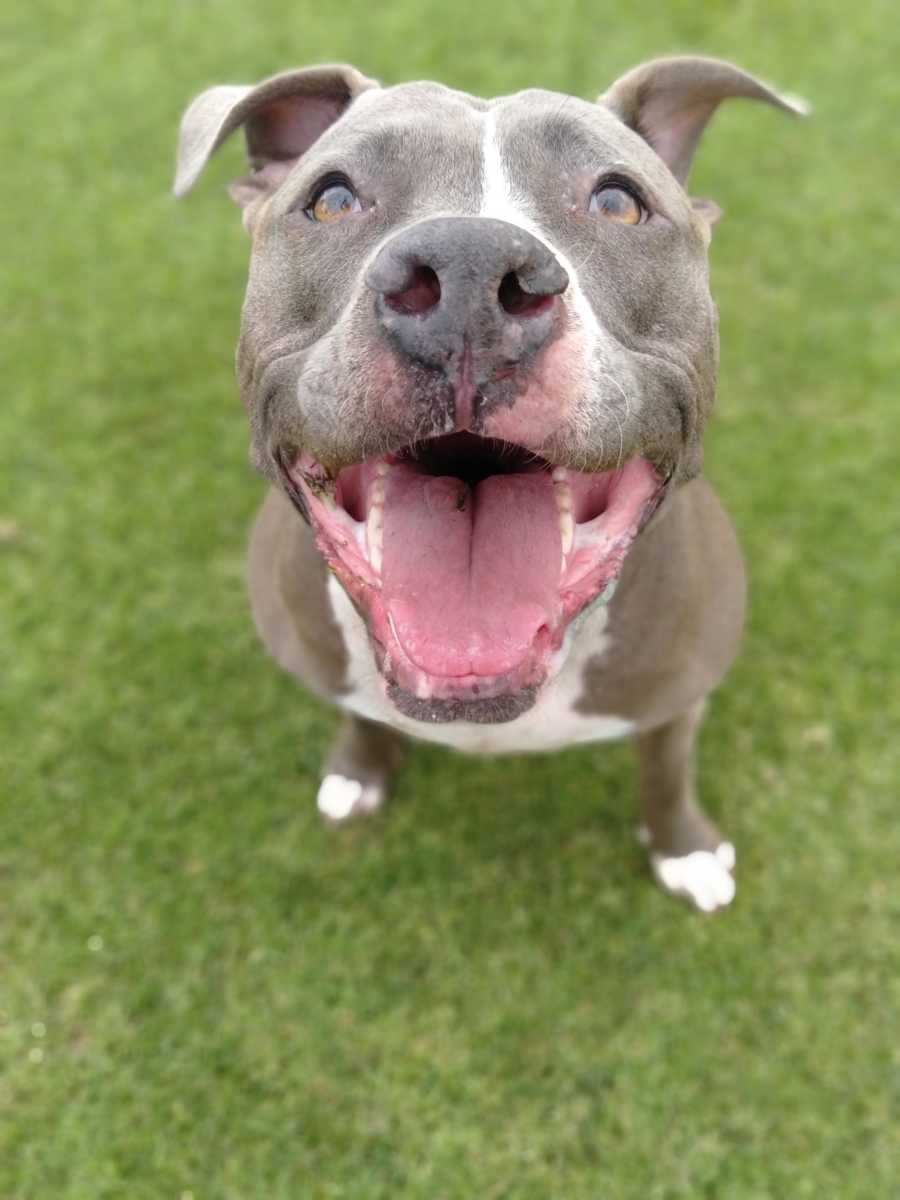
My partner could see the effect Ruby instantly had on me, and even though we had no intent on taking a puppy home that day, I looked over and said to him, ‘Can we please get her? Please?’ He looked back at me, sighed, and said, ‘Okay,’ with a cheeky smile on his face, as if he was saying, ‘How could I possibly say no?’
The first six months with Ruby were filled with adventures, walks, beach swims, and of course, much needed cuddles after I returned home from school. It was my favorite part of the day and the thing I looked forward to all day, every day.
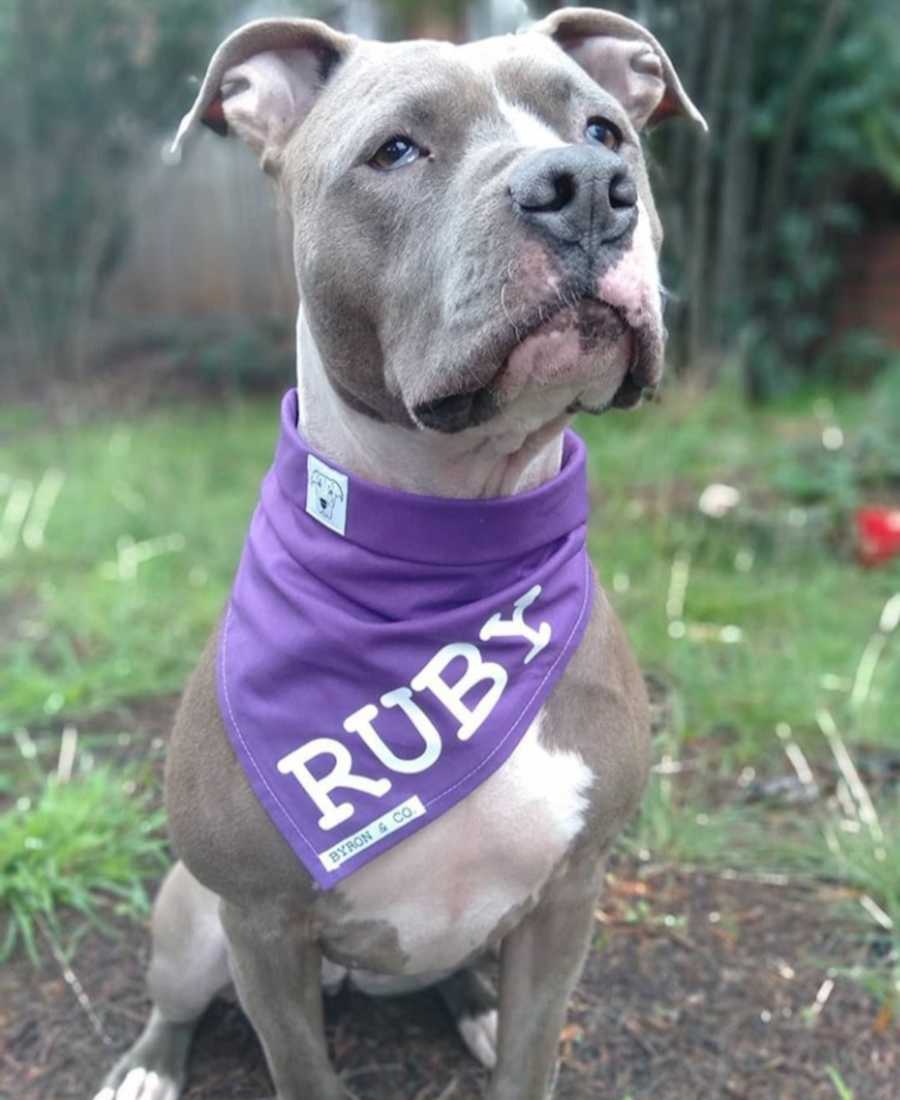
As Ruby grew and got older, we noticed she had an unusually strong bond with me. We knew that bully breeds craved human attention and affection, but Ruby never took her eyes off me or left my side, especially during bad anxiety episodes and panic attacks. And when I left home without her, she hated it. We put it down to separation anxiety and didn’t think anything else of it.
In 2016, I developed a condition called Wolff Parkinson White syndrome, a syndrome in which an extra electrical pathway in the heart causes a rapid heartbeat (for me this could be up to 300 beats per minute). The development of this syndrome caused my anxiety and panic disorder to develop into agoraphobia, meaning I was too afraid to leave the comfort of my home in fear of having a medical episode in public.
I started to take Ruby with me when I left the house. At friends’ houses, cafes, and shops, she would wait for me out front. We found this was the only way I could successfully leave the house, without getting out the front door and panicking about leaving my safe space.
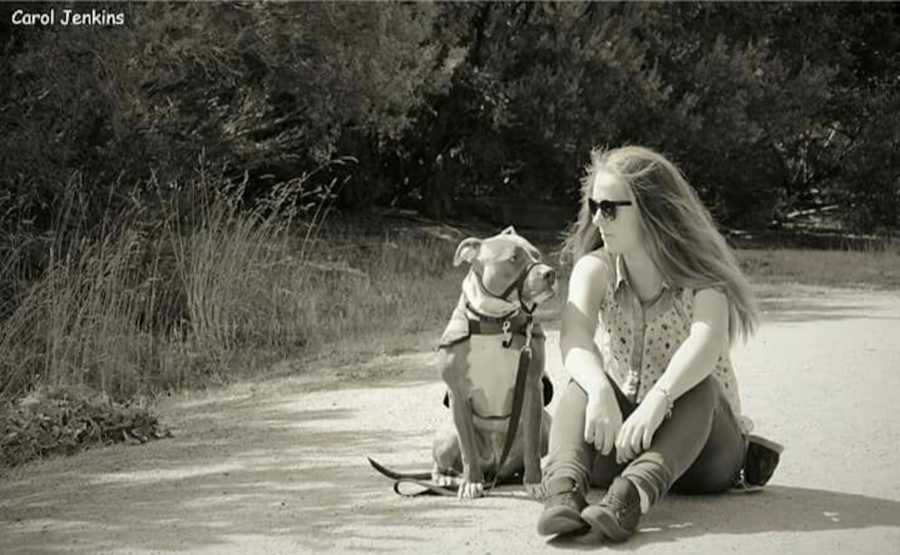
At the time, I knew about guide dogs, as well as diabetic and epilepsy alert dogs. But I had no idea you could get dogs to assist you with psychiatric conditions. One day when I was doing some research online, I came across an organization in Australia that assists mental health sufferers in procuring, training, and certifying their own psychiatric assistance dog.
These dogs assist people with mental health disorders whose lives are often severely compromised by anxiety and fear. I got in contact with them, spoke to my mental health team, and the process for Ruby to become an assistance dog begun. She needed to be temperament tested and put through vigorous training to ensure she was the right fit for the job. We had a set of training standards we had to follow and she had assessments every three months to see where her training was at.
By the six month assessment, she was truly ready to sit her Public Access Test to become fully accredited. Normally dogs aren’t ready until they’ve completed 12-18 months of training, but Ruby was just a natural. Ruby’s job as a psychiatric assistance dog was to alert me to oncoming panic attacks by picking up on things I was doing before one hit — breathing heavily, picking my nails, shaking legs, etc. She also preformed tasks to assist when a panic attack or anxiety attack hit, such as deep pressure therapy, a task where she puts her whole body pressure on me to lower my heart rate and decrease anxiety.
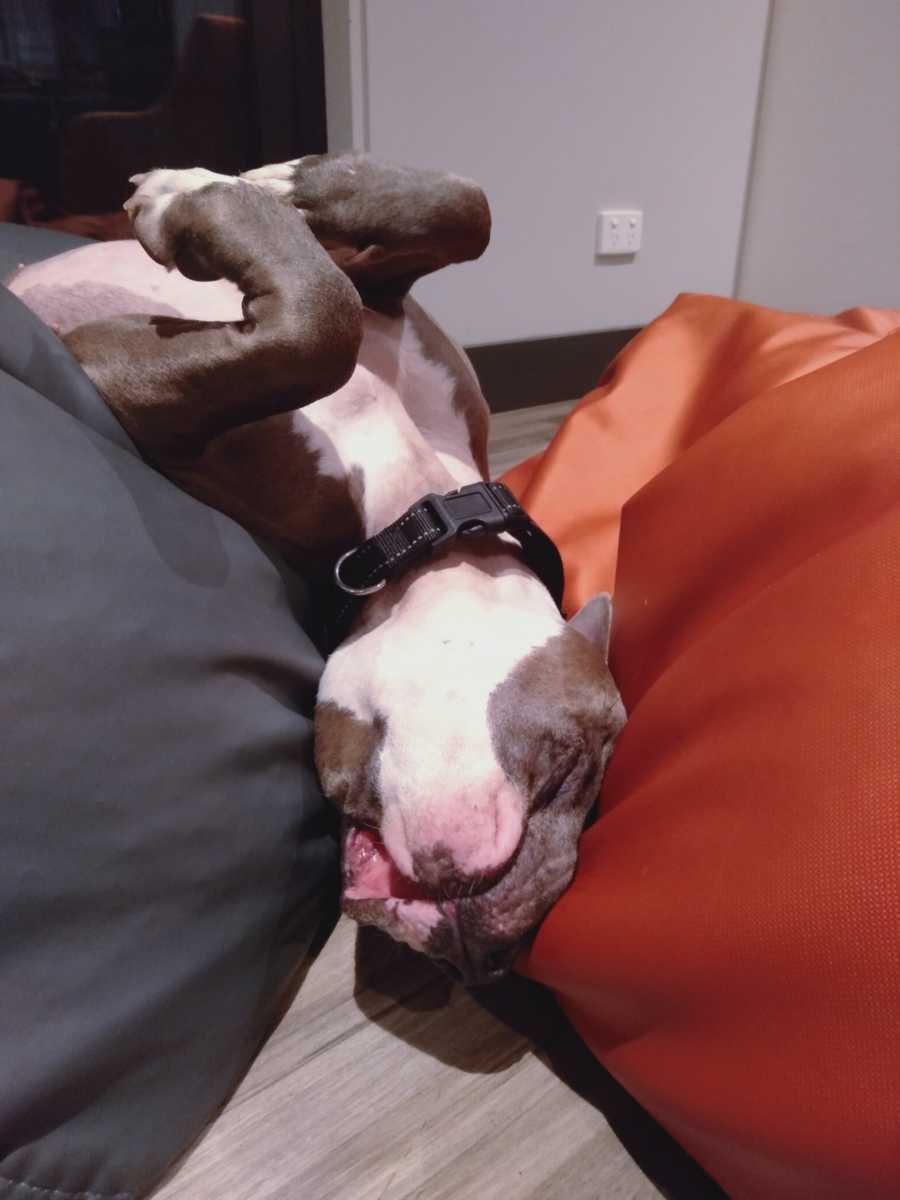
During Ruby’s training, I underwent heart surgery to repair my Wolff Parkinson White syndrome, after I collapsed with a heart rate of close to 300 beats per minute. I was living in a small country town, so I was taken to the closest hospital that performed the procedure, which was two and a half hours away. They went into my heart and used lasers to destroy the electrical pathway causing the issue. The surgery was a success and my horrible syndrome was gone.
I was discharged a few days after and reunited with Ruby. The surgeons ensured me my life would be the same as it was before I developed the condition and I would be back to my normal self in a few short weeks. But that was not the case at all. I knew something wasn’t right, and so did Ruby.
I would still get episodes of tachycardia, as well as fainting on and off and chest pain. Before these episodes, Ruby would paw at me and nudge me, as if she were alerting me to my anxiety. I consulted my specialist about these episodes, and ended up at the emergency department when they got really severe. I was told it was just my anxiety, it was all in my head, and nothing was wrong. At this stage, it was so debilitating I quit my job and relied heavily on Ruby to assist me day-to-day.
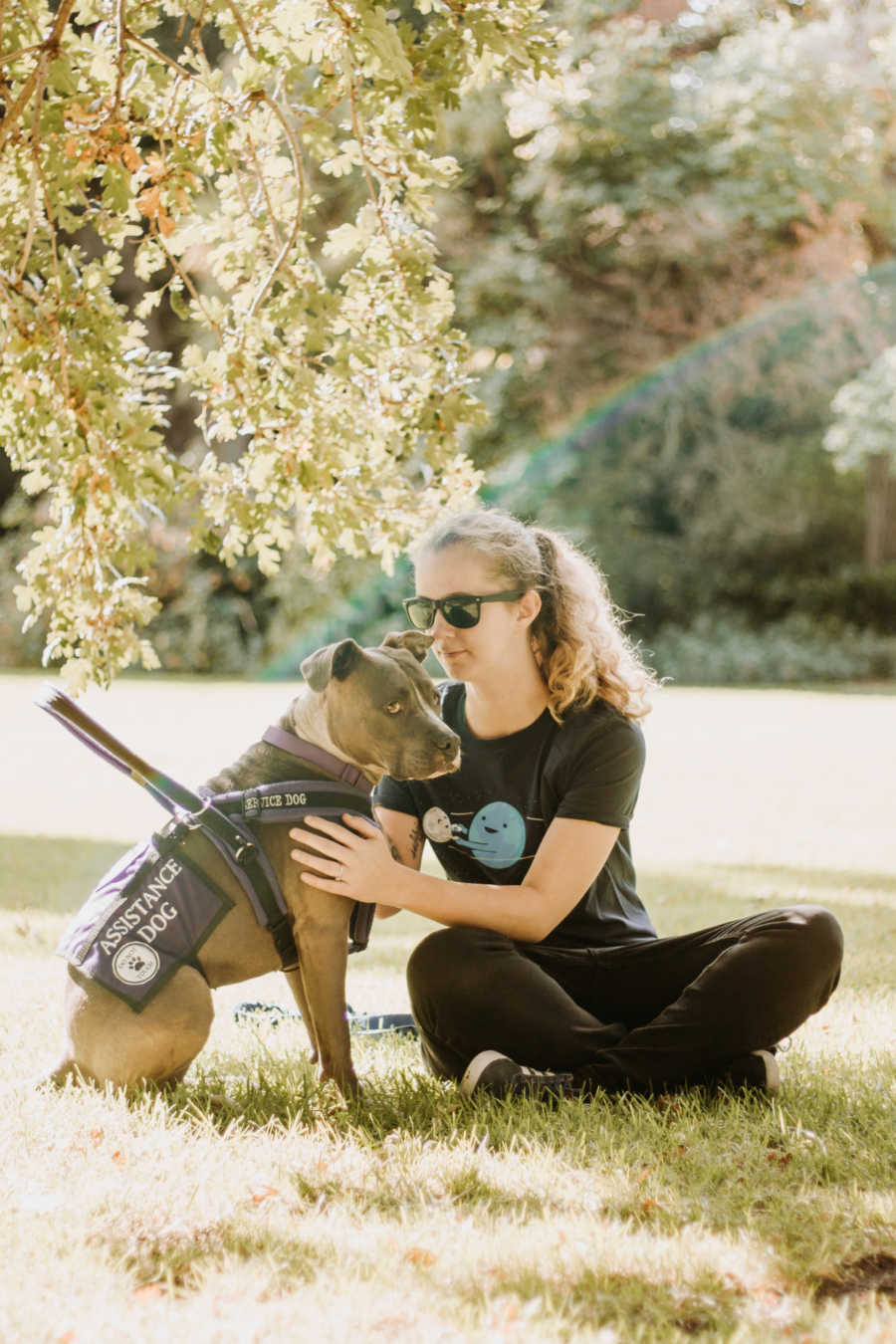
A year and a half later, December of 2018, my partner had completed his university studies and we relocated to Melbourne, Australia, for him to pursue his career as an aquatic ecologist. By now, my condition had fully deteriorated. I was bed-bound and useless most days.
One night, something wasn’t right. Ruby was acting extremely odd towards me. I had been fainting for the majority of the day and my heart rate just wouldn’t decrease at all. Ruby and I went up to the local emergency department where I was seen very quickly. After being assessed by doctors and numerous tests, they mentioned a condition called Postural Orthostatic Tachycardia Syndrome (POTS), which affects circulation. POTS is a form of orthostatic intolerance, the development of symptoms that come on when standing up from a reclining position.
I’ll never forget what the doctor said when the test results came back. He had a calm voice and softly said, ‘The tests came back and they are positive for POTS syndrome.’ I was happy. Finally, I had answers. Finally, someone believed what was going on wasn’t all in my head. And most importantly we had treatments in place.
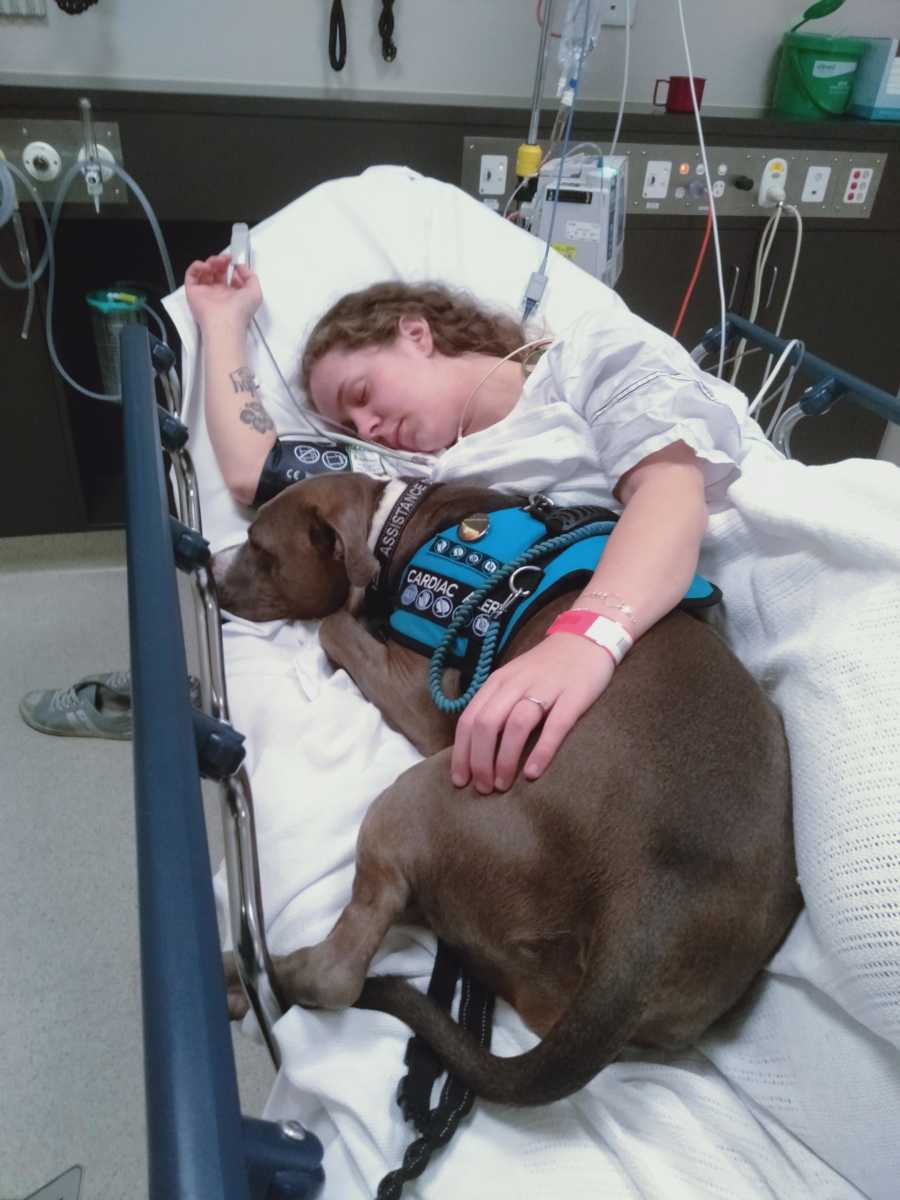
The thing I didn’t expect was what he said next: ‘The tests also came back for EDS and it showed your COL1A1 and COL3A1 genes have a mutation, meaning you have the most severe type of the condition. It is life threatening and unfortunately, does have a life expectancy of 38 years old.’ That hit me hard. I was speechless and just gave the doctor a nod and a quiet, ‘Okay.’ I was unsure how I was going to go home and break the news to my fiancé.
Ehlers-Danlos Syndrome (EDS) regularly occurs with POTS and is a group of disorders that affects connective tissues supporting the skin, bones, blood vessels, and many other organs and tissues. Defects in connective tissues cause the signs and symptoms of these conditions, which range from mildly loose joints to life-threatening complications. Unfortunately for me, I was diagnosed with the vascular type, which is considered to be the most severe form.
My fiancé took it better than I expected, responding with, ‘Well, let’s go do everything you want to do in the time you have left,’ which made me feel like it was incredibly important to him that I cross everything off my bucket list. In the year since the diagnoses, I have crossed three things off my list — holding a koala bear, seeing snow for the first time, and going snowboarding, which was absolutely incredible!
We found out the ‘anxiety’ episodes Ruby had been alerting me to were POTS episodes. She was quickly upgraded from a psychiatric to a multipurpose assistance dog and also classed as a medical alert dog. She started training to learn new tasks to assist with this condition — things like picking up dropped items, carrying items, alerting to oncoming fainting episodes, laying with me when I did lose consciousness, and finding help if needed.
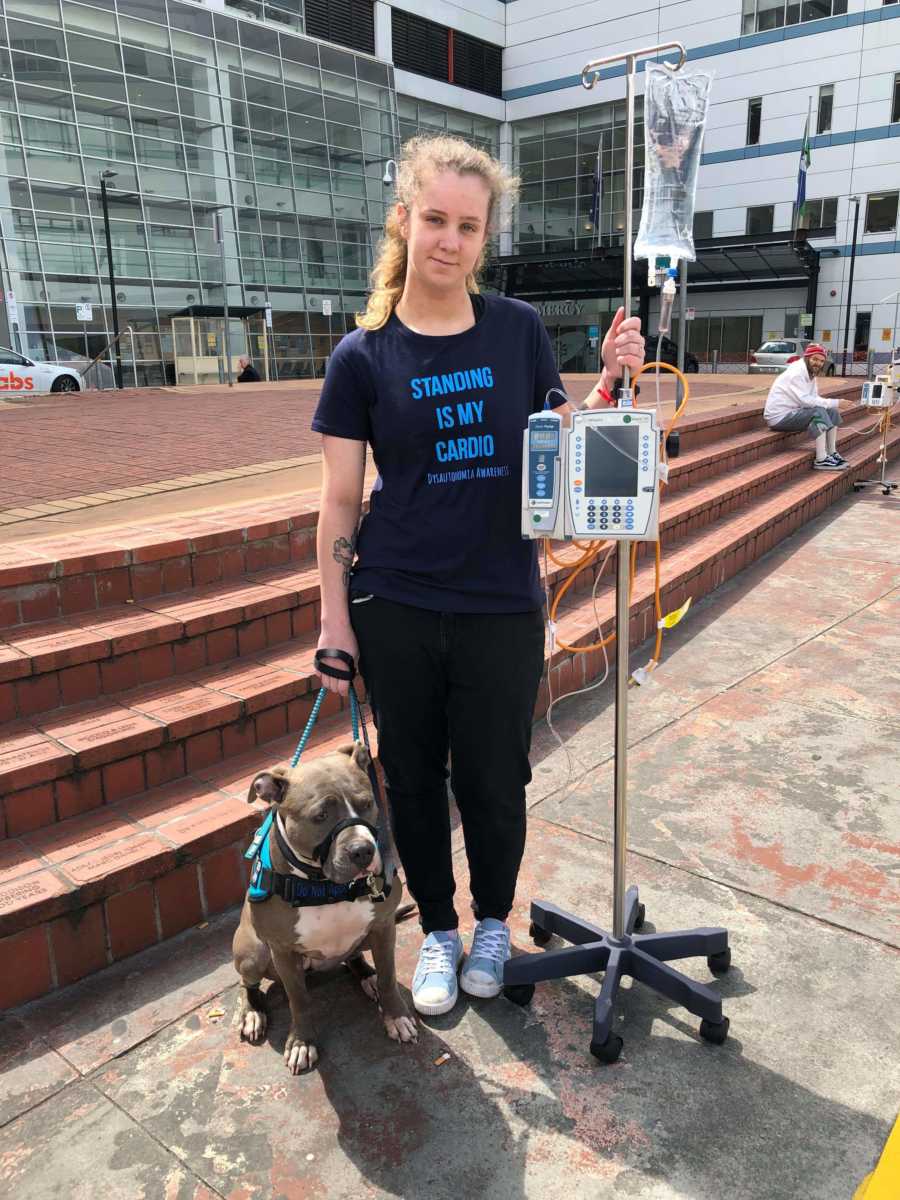
She picked up her new tasks quickly and now she can let me know something is going wrong before I even feel it’s going to happen. And on multiple occasions now, Ruby has saved my life. I trusted her warnings and on two occasions, paramedics arrived just in time.
I remember saying to the paramedic taking my call, ‘My medical alert dog is alerting me. She’s being very persistent and I trust her. I could be about to have a cardiac episode in five to eight minutes.’ They organized help and when the paramedics arrived, I was on the floor, barely conscious, going into Atrial Fibrillation. Ever since then I’ve always put my trust in Ruby.
Ruby’s journey so far has been incredible and she’s done so many things your average dog wouldn’t do. To date, she’s been on five flights and has visited many zoos, aquariums, theme parks, and hospitals. Anywhere I go, she goes. We are never apart and we are absolutely inseparable. Wherever we go, all the people we meet fall in love with her. It’s such a warm feeling for me.
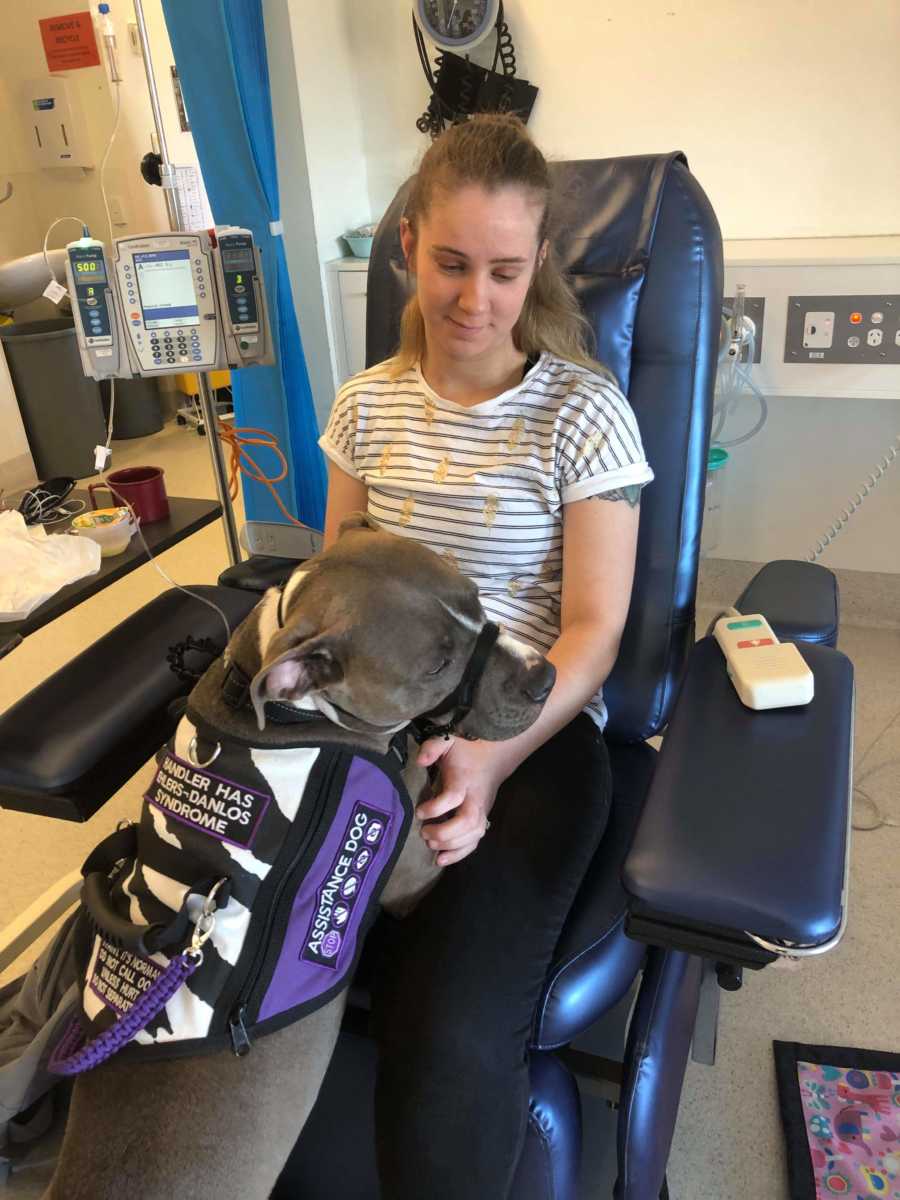
Unfortunately, bully breeds have a negative stigma about them and you quite often see them on the news. Not only does Ruby assist me, but she’s also changing the way that people see these dogs. She’s teaching people, every time we go out, every time we meet new people, that they aren’t this aggressive, scary, dangerous, breed people make them out to be. They are actually an extremely intelligent, placid breed and will do absolutely anything for their owners.
Currently Ruby and I attend the local hospital’s in-patient clinic twice a week, as I receive regular saline infusions to assist with my POTS management. Ruby is very well known at our hospital and the nurses are always excited to see her walking down the corridor towards them with her wagging tail. Not only does she put a smile on my face, but she lights up so many people’s faces in the hospital and it’s such a beautiful feeling.
Aside from being an assistance dog, I got her as a puppy to be a companion for me. Now she is more than just a companion, she is my lifeline. But even more than that, she is my world. She keeps me going in more ways than just physically. She is one of the most important reasons for me to keep going and getting up in the morning, and to keep living my life to the best of my ability. She makes me want to be able to do all the normal things people do, such as study at a university and become a person who can help others. I wouldn’t be the person I am today without her.”

This story was submitted to Love What Matters by Shauna Darcy of Ivanhoe, Victoria, Australia. You can follow her journey on Instagram. Submit your own story here and be sure to subscribe to our free email newsletter for our best stories.
Read more stories like this:
Do you know someone who could benefit from reading this? SHARE this story on Facebook with family and friends.

